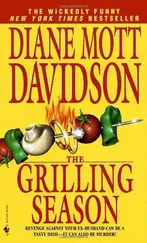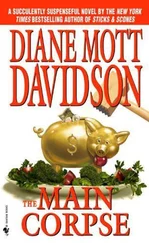Our shimmering cities tell all (including us) that Earth’s inhabitants are thinkers, builders and rearrangers who like to bunch together in hivelike settlements, and for some reason—bad night vision, primal fear, sheer vanity, to scare predators, or as a form of group adornment—we bedeck them all with garlands of light.
Now let’s zoom in closer.
The Earth isn’t the same when you fly over it at three thousand feet and look for signs of humans. It’s easy to lose your bearings. All the reassuring textures of daily life are lost. Gone are the sensuous details of wild strawberry jam, a vase of well-bred irises with stiff yellow combs, the smell of wild scallions beside the kitchen door. But it’s a grand perch for viewing our tracks on the ground—visible everywhere and just as readable as the three-pronged Y’s etched into the snow by ravens or the cleft hearts stamped by white-tailed deer.
The landscape looks very different than it did to our forebears, although we still use the sixteenth-century Dutch word ( lantscap ) to mean the natural scenery of our lives. Peering out of an airplane window, it’s clear how we’ve gradually redefined that rustic idea. No longer does it apply only to such untouched wilderness as Alpine crags, sugared coastlines, or unruly fields of wildflowers. We manufacture new vistas and move so comfortably among them that quite often we confuse them with natural habitats. A field of giant sunflowers in Arizona or an extravagance of lavender in Provence offers a gorgeous naturalistic tapestry, even though both were sewn by human hands.
From the air, you can see how mountains lounge like sleeping alligators, and roads cut alongside or zigzag around them. Or slice clean through. Some roads curve to avoid, others to arrive, but many are straight and meet at right angles. Where forests blanket the earth, a shaved ribbon of brown scalp appears with implanted electrical towers shaped like stick men.
We not only bespangle the night, we broadloom the day. In summer, our agriculture rises as long alternating strips of crops, or quilted patchworks of green velour and brown corduroy. Miles of dark circles show where giant pivoting sprinkler systems are mining the water we unlocked deep below ground, which we’re using to irrigate medallions of corn, wheat, alfalfa, or soybeans. Lighter circles linger as the pale shadows of already harvested crops. Evenly spaced rows of pink or white tufts tell of apple and cherry orchards. Among houses and between farms, small fragments of wooded land remain untouched: either the land is too wet, rocky, or hilly to build on, or the locals have set it aside on purpose to protect or use as a park. Either way, it proclaims our presence, just as the canals and clipped golf courses do.
Where retreating glaciers once dropped boulders and stones, scattering rocks of all sizes along the way, hedgerows border the crops. Farmers first had to unearth the rocks and boulders before they could till the land, and they piled the riprap along the edges of fields, where they were colonized by shrubs and trees that thrive in crevices and trap the drifting snow. On the first warm spring days, all of the snow will have melted from the corrugated brown fields, but not from the rocky white-tipped hedgerows that frame them.
Where dark veins streak the mountains, coal miners have clear-cut forests, shattered several peaks with explosives, scooped up the rubble, dumped it into a valley, and begun excavating. The blocks and crumbles of a stone quarry also stand out, and the terraced ziggurats of a copper mine rise above an emerald green pool.
Where mirages swim in the Mojave Desert’s flan of caramel light, tens of thousands of mirrors shimmer to the horizon, each one a panel in an immense solar thermal facility. In other deserts around the world, and on every continent, including Antarctica, arrays of sun-catchers sparkle. Oil refineries trail for miles, swarmed over by pump jacks attacking the hard desert floor like metal woodpeckers and locusts.
Our pointy-nosed boats dot the ports and lakeshores; our tugboats wrangle commercial barges down the blue sinews of rivers. Newly hewn timber looks like rafts of corks floating toward the sawmills. Where marshlands attract flocks of migrating birds, one may also spot the scarlet paisley of our cranberry bogs, and the yellow of the mechanical growers that flood the bogs and then churn the cranberries to loosen them from their vines, corralling the floating fruit in long flexible arms. Red capital T ’s are the stigmata of our evaporation ponds, where salt concentrates hard as it’s harvested from seawater, in the process changing the algae and other microorganisms to vivid swirls of psychedelic hues. One sees our dams and harnessed rivers and the long zippers of our railway lines, and even occasional railway roundhouses. There’s the azure blue of our municipal swimming pools, and the grids of towns where we live in thick masses piled one upon the other, with the tallest buildings in the center of a town, and long fingers of shorter buildings pointing away from them. The cooling stacks of our nuclear power plants stare up with the blank eyes of statues. Low false clouds pour from the smokestacks atop steel and iron plants, factories, and power stations.
These are but a few signs of our presence. Of course, our scat is visible, too. Junkyards and recycling centers edge all the towns, heaped with blocks of compressed metals and the black curls of old tires, swirling with scavenging gulls.
We’ve created a bounty of new landscapes, and lest the feat be lost on anyone, we even tack on the suffix “scape” to describe them. I’ve come across “cityscape,” “townscape,” “roadscape,” “battlescape,” “lawnscape,” “prisonscape,” “mallscape,” “soundscape,” “cyberscape,” “waterscape,” “windowscape,” “xeriscape,” and many more. And let’s not forget all the “industrial parks.”
Although our handmade landscapes tend to fade into the background, just a stage set for our high-drama lives, they can be breathtaking. In Japan, tourists bored with volcanic mountains and gardens, and urban sightseers given to kojo moe , “factory infatuation,” are flocking to sold-out tours that specialize in industrial landscapes and public works, which are viewed by bus or boat. Especially popular are the nighttime cruises that feature mammoth chemical factories spewing smoke and aglitter with star-clusters of light, overseen by the moon and more familiar constellations. It’s become a popular date for romantic young couples.
“Most people are shocked to discover that factories can be such beautiful places,” says Masakatsu Ozawa, an official in Kawasaki’s tourism department. “We want tourists to have an experience for all the senses including that of factory smell.”
“If you come to Tokyo, don’t bother going to Harajuku,” the city’s shopping district, Ken Ohyama writes in his book Kojo Moe . “Go instead to Kawasaki,” an industrial hub rich in rust, contaminated water, and polluted air. For that’s where the industrial scenery is the most vivid. Some Japanese lawmakers would like a few of their working factories designated as World Heritage Sites, to draw even more tourists.
For the past twenty-five years, the Canadian photographer Edward Burtynsky has been documenting “manufactured landscapes” all over the world. Many of his most startling photographs were shot inside Chinese factories that ramble for blocks, where workers pass nearly all of their daylight hours surrounded by machines, products, and each other, under artificial light. The size and scale of their surroundings play upon the eyes and mind as a landscape. So does each floor of a large office building in, say, Singapore, divided into dozens of honeycomb cubicles.
Читать дальше












